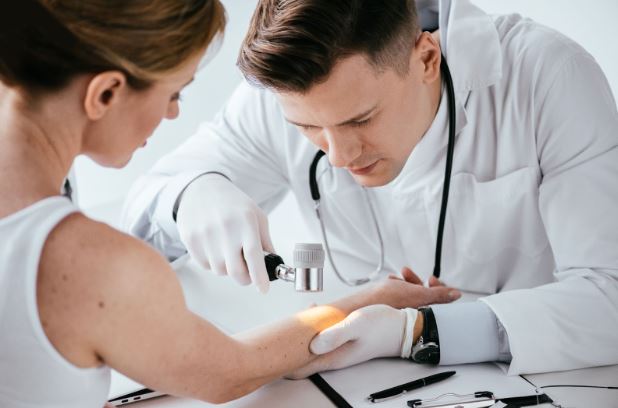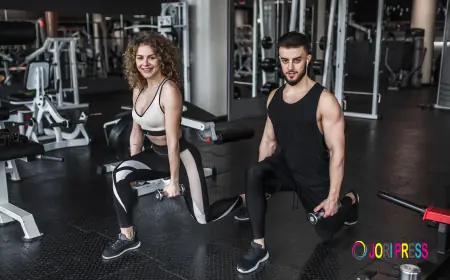What the Dermatologist Says About Sunscreen Indoors
Most people associate sunscreen with outdoor activities—beach days, hikes, or gardening.

Most people associate sunscreen with outdoor activities—beach days, hikes, or gardening. But what many don’t realize is that the need for protection doesn’t end at the front door. According to expert insight, even indoor spaces aren’t free from the effects of damaging rays. Let's delve into
How UV Rays Enter Indoor Spaces
The Role of Windows in UV Exposure
Even while indoors, windows allow a significant amount of ultraviolet light to pass through. While some windows can block UVB rays, UVA rays—which penetrate deeper into the skin—can still filter in. These rays can reach skin while someone is sitting next to a window in a car, at home, or at work.
Reflected and Ambient Exposure
UV rays don’t just come directly from the sun. They can bounce off reflective surfaces like mirrors, light-colored walls, or glass. This ambient exposure may not feel intense, but over time, it can contribute to visible changes in the skin.
When Indoor Sunscreen Use Makes Sense
Working Near Natural Light
People who spend hours near a sunlit window, especially during the middle of the day, are unknowingly exposed. Whether it's working at a desk near a large window or reading by the balcony, skin can still absorb UV rays.
Activities That Extend to the Balcony or Porch
Even short, repeated exposure to semi-outdoor spaces—such as stepping out onto a balcony or opening windows for fresh air—can make a difference. If skin is regularly in contact with natural light, consistent protection becomes relevant.
What the Dermatologist Recommends for Indoor Routines
Keep Sunscreen Part of the Morning Routine
A reliable habit that many skincare experts promote is applying protection in the morning, regardless of plans to step outside. This ensures that even if the day includes moments near sunlight indoors, the skin has a barrier in place.
Reapplication Isn’t Always Necessary Indoors
For those staying inside most of the day and not sweating or washing the face frequently, one morning application may be enough. However, experts suggest considering reapplication if sitting directly in sunlight for extended hours.
Indoor Light Sources and Skin Health
Can Artificial Light Affect Skin?
While natural sunlight is the main concern, some studies suggest that high-energy visible light (HEV), particularly from strong LED and fluorescent bulbs, might also influence skin tone over time. Though the impact is less severe than sunlight, it adds another reason to maintain daily habits.
Blue Light from Screens
There has been some discussion around blue light from screens and its impact on skin appearance. While the evidence isn’t conclusive, those who spend long hours in front of devices might choose to include protective measures as part of their routine.
Key Areas People Miss Indoors
Face and Neck
These are the most exposed parts of the body, especially when working or relaxing near a window. Many people remember the face but forget the neck, which also benefits from consistent protection.
Hands and Arms
Arms resting on a desk in sunlight or hands exposed while cooking by a window can still be affected by rays. These areas often show signs of aging earlier when not protected.
Myths About Sunscreen Indoors
“If I’m Not Outside, I Don’t Need It”
This is a common misunderstanding. UV rays don’t require outdoor conditions to reach the skin. Daylight through windows is enough for cumulative exposure.
“Indoor Light Isn’t Harmful”
Though indoor lights are generally weaker, they’re used for long periods. Over time, they may contribute to minor effects, especially when combined with other sources of exposure.
FAQs About Indoor Sunscreen Use
Do I Need to Apply Every Day Even If I Stay Home?
Yes, especially if you spend time near natural light. Consistency is key for long-term skin support.
What Time of Day Are Indoor UV Rays Strongest?
Midday hours still have the highest intensity, even indoors. Sitting next to windows during late morning to early afternoon increases exposure.
Should I Apply to Areas Covered by Clothes?
Generally, clothing provides enough protection. Focus more on exposed areas like the face, neck, hands, and arms.
Can I Skip Sunscreen on Cloudy Days?
Clouds don’t fully block UV rays. Indoor spaces are still lit by natural daylight, meaning skin can still be reached by radiation.
Will My Skin Really Be Affected Indoors?
Over time, yes. It may not be obvious right away, but experts emphasize how subtle exposure builds up and contributes to changes in skin texture and tone.
The Long-Term Benefits of Indoor Protection
Helps Maintain Even Skin Tone
UV rays can lead to uneven tone and spots. Protecting skin daily, even indoors, can help maintain a more uniform appearance.
Supports Skin Over Time
Consistency with protective habits plays a big role in how skin ages. Daily application of protection indoors helps reduce the visible signs that come from years of unnoticed exposure.
Final Thoughts
The belief that sunscreen is only necessary for beach trips or long walks outdoors misses the full picture. Modern life often includes plenty of indirect sunlight and time near windows, where rays silently affect the skin. The friendly advice from experts
What's Your Reaction?
 Like
0
Like
0
 Dislike
0
Dislike
0
 Love
0
Love
0
 Funny
0
Funny
0
 Angry
0
Angry
0
 Sad
0
Sad
0
 Wow
0
Wow
0
















































